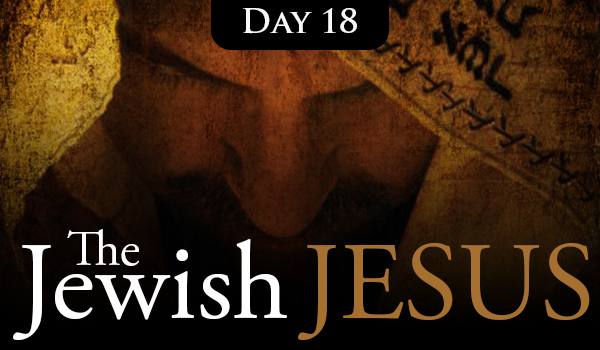
Everything they do is done for people to see:
They make their phylacteries wide and the tassels on their garments long.
Matthew 23:5
This topic was covered in a previous devotional, but is worth revisiting here. In Matthew 23, Jesus was scolding the Pharisees and teachers of the law because they made the law an impossible burden on the Jewish people. Further, they wore religious clothing in a prideful way that drew attention to themselves and not to their assumed devotion to God.
So what are the phylacteries and tassels that this verse mentions? Let’s start with phylacteries. This is the word tefillin in Hebrew. It was worn during morning and evening prayer time. The phylactery is a black box that contains a parchment with four passages from the Old Testament: Exodus 13:1–10, Exodus 13:11–16, Deuteronomy 6:4–9, and Deuteronomy 11:13–21.
One phylactery was worn on the forehead and the other on the left arm. There were leather straps attached to the black box for wrapping around the forehead, and another wrapping from the left hand to the upper arm near the heart.
Within all four of the passages in the box, God stated that His commands are like signs or symbols on their hands and foreheads. So, the Jewish people took this literally and created the phylactery. Devout Jewish men still wear them today.
The Jewish men also wore an outer garment called the tallit, with tassels on the four corners. These tassels are called tzitzit. Having these on the garments was a command by God through Moses in Numbers 15:37–41 and Deuteronomy 22:12. This garment became a prayer shawl and covered the head during prayer. Today, it is worn as an inner garment.
It is reasonable to assume that Jesus would have worn both items. The woman with the bleeding problem touched Jesus’ outer garment and was healed (Mark 5:21–34). Likewise, others who desired healing also wanted to touch the edge of His garment (i.e., the tallit with the tassel; Matthew 14:34–36). One could easily argue that during the many times Jesus went alone to pray (Matthew 14:23; Mark 1:35; Luke 5:16, 6:12), He was probably wearing an earlier version of these items than are worn today.
Our practical application for Christian life today is to look at Proverbs 7:1–3:
“My son, keep my words and store up my commands within you. Keep my commands and you will live; guard my teachings as the apple of your eye. Bind them on your fingers; write them on the tablet of your heart.”
The symbolic position of our heart and mind is most important to God, not the physical appearance of devotion and obedience.